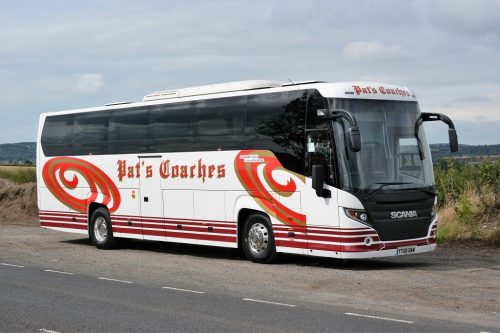
Introduced to the UK market in 2015, initially as a tri-axle, the Scania Touring HD has found favour with cost-conscious operators looking for a well-specified vehicle that can be used on all types of work. Stuart Render takes a closer look at the latest 51-seater variant
There’s a hint of deja-vu with the Scania Touring. With the tri-axle landing on these shores back in 2015, and the vehicle already proving its worth with operators up and down the country, you might be forgiven for wondering why we’re writing about it now. […]
By subscribing you will benefit from:
- Operator & Supplier Profiles
- Face-to-Face Interviews
- Lastest News
- Test Drives and Reviews
- Legal Updates
- Route Focus
- Industry Insider Opinions
- Passenger Perspective
- Vehicle Launches
- and much more!


